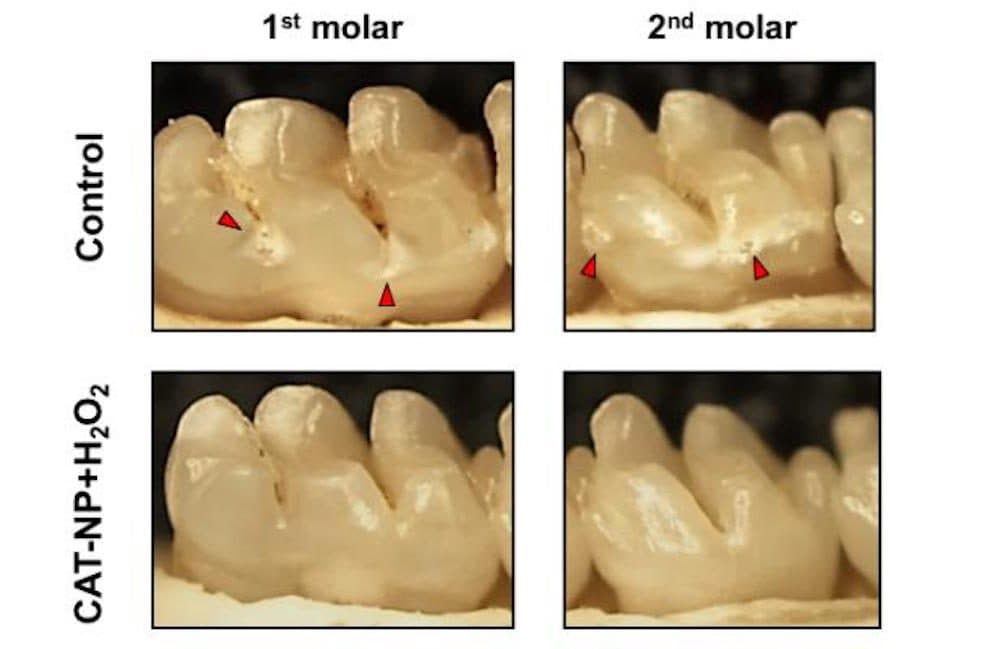Advertisement
Nano-Toothpaste And Nano-Mouthwash? Rat Study Suggests Maybe

Forget electric toothbrushes and mint-flavored mouthwash. The best thing for your teeth, according to University of Pennsylvania researchers, might someday be nanoparticles.
According to a new study in rats, iron-containing nanoparticles may be better at destroying cavity-causing plaque than nearly any other tooth-cleaning technique.
These tiny particles act as catalysts to promote a natural cleaning process in your mouth. The process can kill bacteria thousands of times more efficiently than a traditional brush, the paper in the journal Biomaterials suggests.
When the particles enter your mouth, they trigger hydrogen peroxide activity. Hydrogen peroxide acts as your body’s natural antiseptic, and produces other molecules that degrade plaque and kill bacteria.
“Even using a very low concentration of hydrogen peroxide, the process was incredibly effective at disrupting the biofilm,” says senior author Hyun (Michel) Koo in a press release. “Adding nanoparticles increased the efficiency of bacterial killing more than 5,000 fold.”
The researchers estimate that this procedure would be less expensive than existing dental treatments. “It’s a tiny amount of material, and the nanoparticles are fairly easy to synthesize, so we’re talking about a cost of cents per dose,” said David Cormode, an assistant professor of Radiology and Bioengineering at Penn.
At first, the researchers were wary of using nanoparticles. In a healthy mouth, there is the potential to unleash dangerous molecules that, while they destroy plaque, can also damage healthy tissue. However, they soon found that the nanoparticles had no effect on mouths with a pH of 7, which is the value usually found in a healthy, cavity-free mouth.
When we develop plaques on our teeth, the pH of our mouth becomes more acidic. So instead of a healthy 7, a mouth with plaques or even cavities may have a pH of around 5.
When the pH of the mouth drops to around 5, the nanoparticles become activated, and begin to produce molecules that break up plaque. The healthy mouth tissue remains unharmed.
No one wants to spend extra hours in the dentist's chair, but the procedure only takes a minute, the researchers say. Doing this one-minute fix twice a day for two weeks significantly reduced tooth decay in the rats they studied, they report.
“We are thinking of developing a toothpaste or mouthwash formulation or even a strip that could be used at home,” said Dr. Koo. The research was funded by The International Association for Dental Research and the GlaxoSmithKline Innovation in Oral Health Award.